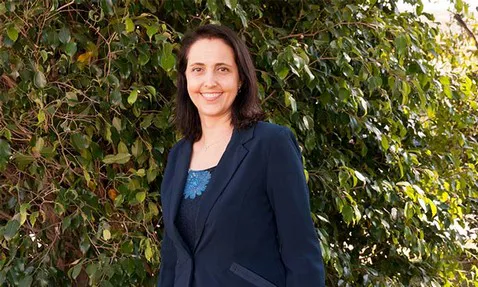Soilless cultivation continues to grow, especially in fruits such as berries, with which the production can increase by up to 40% while reducing irrigation and fertilization costs. Alejandra Pintos, marketing manager at Projar, explained why more and more growers are opting for hydroponic systems and why its AGRO+ Projar Suppor service is making such a big splash.

What are the main differences between growing in soil and growing in substrate?
Growing without soil is a much more productive and technified method. It allows for much more exhaustive controls and ensures optimal conditions in the root zone of the plant. This means that plants grow in a much more suitable environment when it comes to nutrients and root aeration.
Root development is vital for the plant to grow healthy, strong, and more productive. If to this we add an optimization of fertigation needs, we obtain extraordinary results in terms of productivity.
Also, growing without soil allows us to manage the cultivation space more efficiently, improving the number of plants per square meter.
Given the current impact of inflation and skyrocketing production costs, do you think it can be harder to invest in production methods like this, or could it rather bring advantages for growers in the long term?
Quite the opposite. Our soilless customers have increased their harvest by an average of 40% in the first two years of implementation. That means much more produce for sale.
In addition, soilless cultivation can be accompanied by our AGRO+ Projar Support Solutions service, which helps to improve the use of water and fertilizer resources by significantly reducing these costs.
This makes it possible to recover the necessary investment in a short period of time.
What is Agro+ Projar Support Solutions, and why is it revolutionizing the soilless sector?
The truth is that it has been very well received. It is a support service for Projar's soilless customers, which allows them to benefit from our expertise.
This new service addresses aspects related to crop planning and monitoring.
We stand next to our customers in every step, from the installation of the hydroponic system to the creation of an ad hoc fertigation plan for each crop.
In this way, customers feel accompanied and advised at all times, and this helps them improve and optimize the profitability of their productions.
Agro+ Projar Support Solutions provides a customized fertigation strategy and the possibility of monitoring our customers' crops with crop sensing. "We have reduced water and fertilizer consumption costs in blueberries by an average of 15% in a region with significant irrigation water limitations."
What is the reason for the success of soilless berry cultivation?
Berries require very specific soil conditions. Soilless cultivation makes it possible to break down this barrier and eliminate this limitation.
Soilless cultivation also makes it possible to have the first production already after a year or two of cultivation, allowing for a recovery of the investment in a shorter period of time.
Lastly, with soilless cultivation, greater homogeneity is achieved in the plants, with a more uniform growth in the different stages of cultivation, which is key for correct agronomic management and to achieve the best possible yields per plant.
We provide a guide to the advantages and benefits of soilless cultivation, with which we intend to give an overview of the different possibilities of this cultivation technology.
Is this way of growing berries already widespread, or is there still a long way to go?
Yes, it is a growing phenomenon, as producers are aware of the great advantage of bringing technology to their productions. Also, consumer demand for berries is recording a significant increase worldwide due to the nutritional properties of these fruits. The berry sector is becoming increasingly competitive. A more professional and productive cultivation is necessary to handle this new market situation.
In which countries do you have more presence, and where do you think there are more possibilities for growth?
At Projar, we do not have any geographical limitations. We are currently advising producers in more than 10 different countries.
We have important projects underway in Peru, Spain, Portugal, Morocco, China, and Mexico..., but now we are entering the United Kingdom with several projects. In fact, we will participate next July 13 in the Fruit Focus fair, where we have several appointments booked to learn about new potential projects.
![]() For more information:
For more information:
PROJAR
La Pinaeta s/n · Polígono Industrial de Quart de Poblet, 46930 Quart de Poblet, Valencia, Spain
Tel.: +34 961 597 480
www.projar.es
